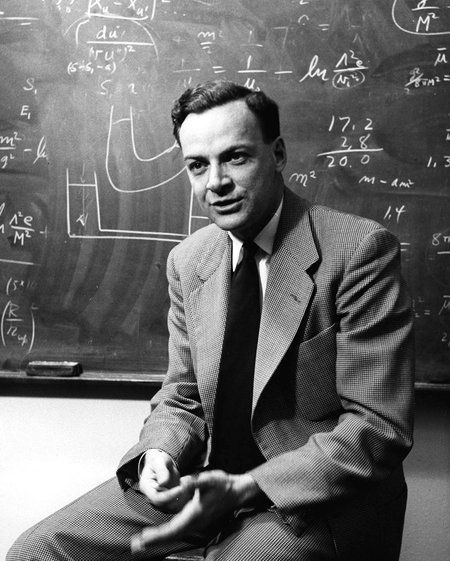What's your Rossby number?
And what do Natalie Portman and Richard Feynman have in common?


As a teenage mega-nerd, I looked upon physicist Richard Feynman as a kind of rockstar, up there with the likes of Liam Gallagher. He was obviously a hugely successful researcher, but he was also a great explainer, and had an intriguing public life beyond theoretical physics (think bongo playing and Pasadena cocktail parties). In the refined social circles of undergraduate mathetmatics, some even more niche figures were just as cool. Paul Erdős was one of them. The stories of this couch-surfing, problem-solving machine were legendary. (From a more middle-aged perspective, he sounds like simultaneously the best and worst house guest.) Erdős was a prolific paper writer, a fact which led to the concept of the Erdős number.
The idea of the Erdős number is that anyone who wrote a paper with Erdős gets a 1; anyone who collaborated with an Erdős number 1 author (but not with Erdős himself) gets a 2; and so on. It's a similar idea to six degrees of separation, and the related six degrees of Kevin Bacon. For anyone who has publised in the mathematical literature, you can use the American Mathematical Society's calculator to see your own Erdős number. And you can use a similar tool to get the Bacon number of anyone who has worked on a major TV or movie production. A few special people have done both of these things, and have an Erdős-Bacon number: the sum of their Erdős number and their Bacon number. Membership in this special club is what Natalie Portman and Richard Feynman share. Their Erdős-Bacon numbers are 7 (5+2) and 6 (3+3) respectively.
As a meteorologist and oceanographer, I regularly come across quantities named after Carl-Gustaf Rossby. The American Meteorological Society (the other AMS) glossary has 10s of results for Rossby. So, naturally, I see an opportunity to create a new one by calculating the Rossby number of researchers as their collaboration distance from Rossby. Surprisingly, given how much influence he had on the field, Rossby was, in comparison to Erdős, neither particularly prolific nor particularly collaborative. Erdős has papers and co-authors numbered in the hundreds, while for Rossby, those numbers are in the tens.
One consequence of Rossby's publication history is that it takes a bit more detective work to calculate Rossby's collaboration distances. Rossby can be linked to the main body of mathematical literature by a chain of 3 to John von Neumann (Rossby - Bolin - Charney - von Neumann). von Neumann himself has an Erdős number of 3, so Rossby's Erdős number is (at most) 6. For researchers in meteorology and oceanography, a shorter route to Rossby is likely to be via University of Washington professor John Wallace (Rossby - Starr - Wallace) who, like Erdős, seems to have publications and collaborators numbered in the hundreds.
Unfortunately, I can't find a reliable tool to quickly calculate researchers' Rossby numbers. My impression is that many of the journals that meteorologists and oceanographers publish in are not included in the American Mathematical Society's calculator. Using Semantic Scholar, I calculated my own Rossby number to be 5 (Rossby - Starr - Wallace - Battisti - Rasch - Reeves Eyre). I also have an Erdős number of 5 (Erdős - Moran - Yavneh - McWilliams - Van Roekel - Reeves Eyre). Somewhat unexpectedly, my Bacon number is just 3, but the story behind that is best told over a beer.